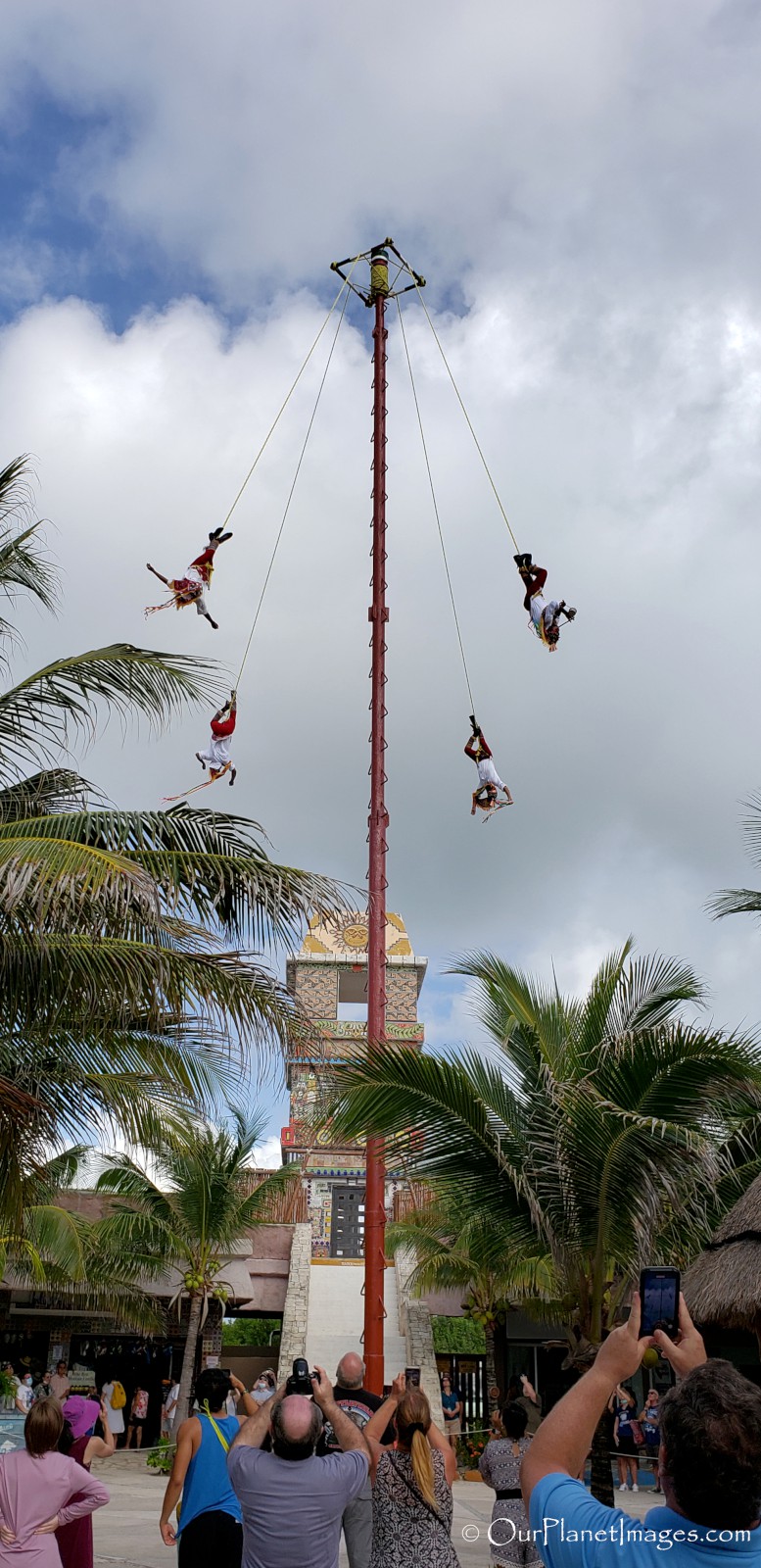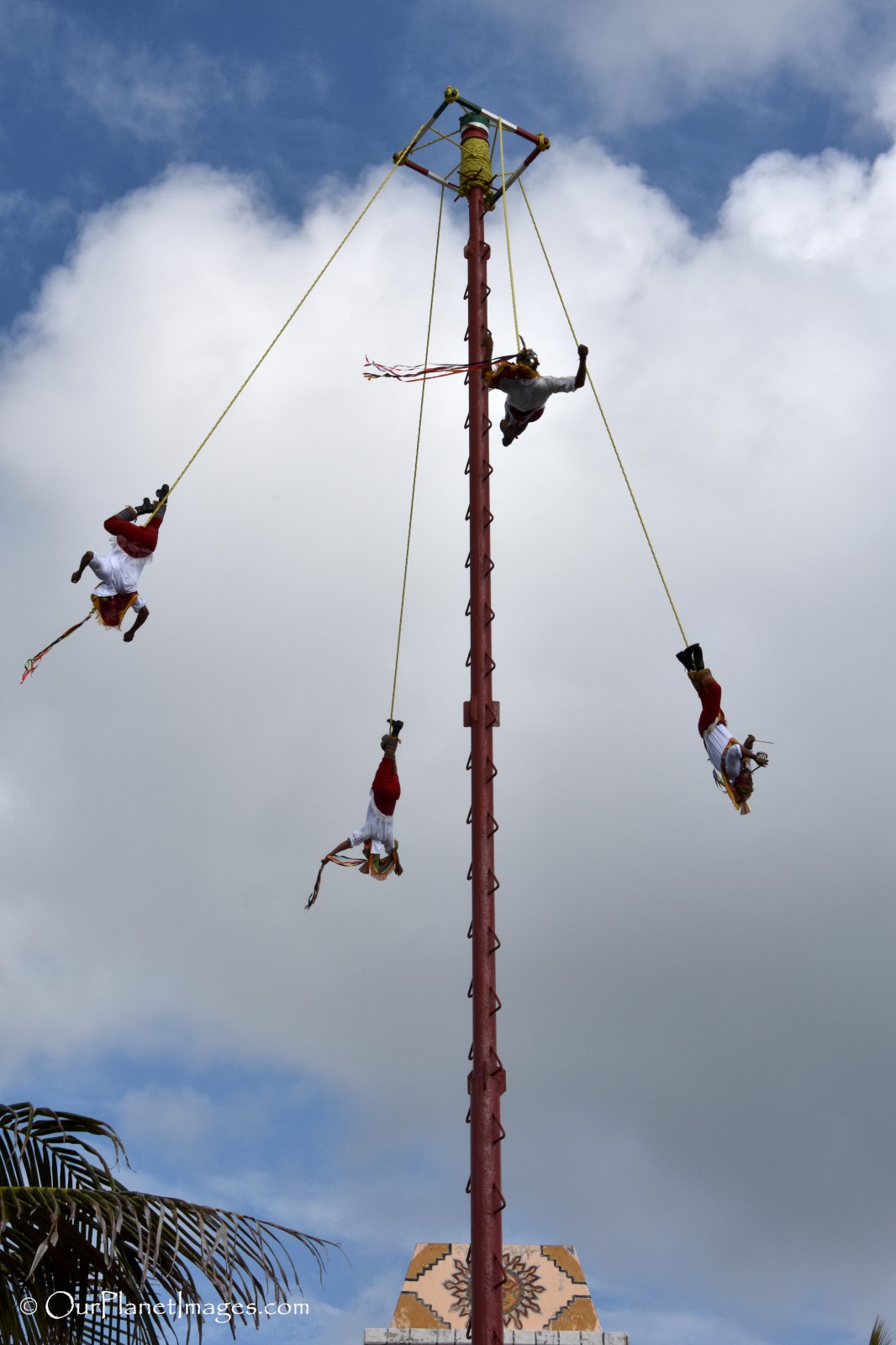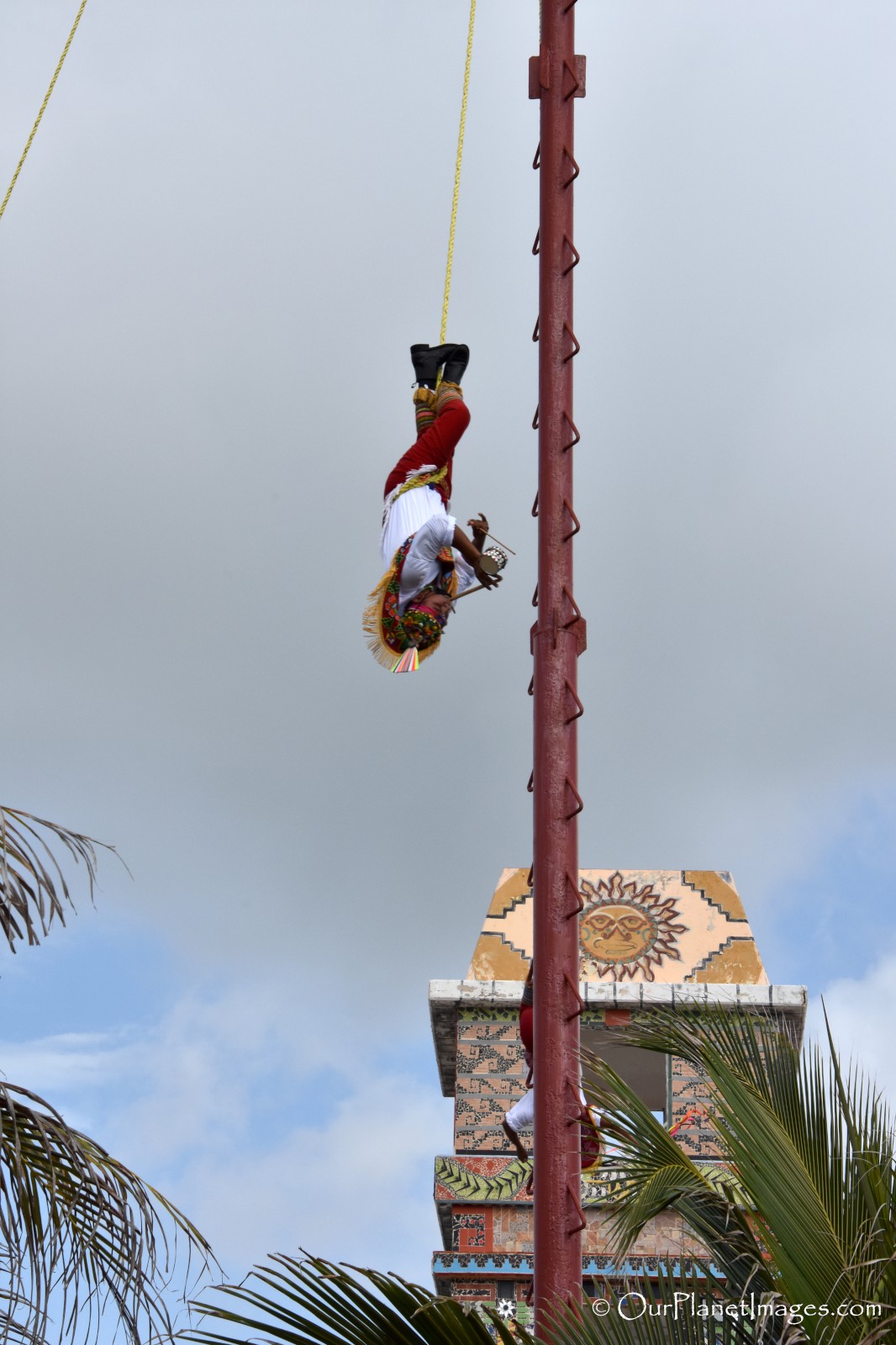The ceremony of the Voladores was an ancient ritual that was originally performed to appease the gods, asking for rainfall and ending the severe drought.
Today, the ceremony of the Voladores (flying men) is a cultural heritage event that is performed by several groups in Mexico and Central America. The ceremony involves four men climbing up a 30 to 40 meter high pole then gradually lower themselves from the pole upside down while tied to long rope that is wrapped around a spool at the top of the pole. As the rope extends from the weight of the men, the spool rotates and the men spin around the pole. The leader of the group plays traditional songs on a flute and a small drum while the men are slowly falling towards the ground. This special ritual served as an offering to the gods. In exchange for the offering they would ask the gods for rainfall which would bring balance back to the land.
Descending back to the ground
As the men descend back to the ground, the motion of the men twirling around the pole mimics the motion of the men flying giving them the name of “Flying Men”. The falling motion symbolizes the falling of raindrops from the sky which is what they were seeking from the gods.


Rotating around pole
The four flying men rotate around the pole as they descend back to the ground. As they descend, they make 13 rotations around the pole before reaching the earth. The 13 laps multiplied by 4 (number of flying men) results in the number 52 which is the number of years of each solar cycle. When a new solar cycle starts it represents a new sun being born and the time when new life begins.




About the flying men
Aside from the symbolism of the ceremony, there is also a lot of symbolism associated with what the flying men are wearing. Some of the symbolism in the ceremony is:
- They have a green hat with a crest and red pants which resembles the look of the quetzal bird. The bird was viewed as the “god of the air” and a symbol of goodness and light.
- The multi-colored streamers represented the rainbow after the rain arrives.
- The flute represents the singing of a bird.
- The drum resembles the sound of a thunderstorm.





Note: The ceremony of the Voladores was added to the UNESCO list of Intangible Cultural Heritage of Humanity in 2009.
The Dust on My Shoes
I knew about the flying men in Mexico for many years and I always wanted to see them in person. The thought of seeing men falling from a tall pole tied to a rope seemed like it would be exciting to watch. In actuality, the men’s decent was very slow and it was not an exciting event to watch. I am sure that it would have been more exciting to me if I had been the one tied to the rope hanging upside down and spinning around in circles while falling 100 feet.
I am glad that I finally had the chance to see the ceremony even though it was not as exciting as I had expected. Additionally, the cultural heritage of the ceremony and learning about the ceremony’s symbolism makes the event more meaningful.
Not all events live up to their hype but that doesn’t mean those events aren’t worth seeing. The value of attending a cultural heritage event is not about being entertained but in learning about history of the culture.


